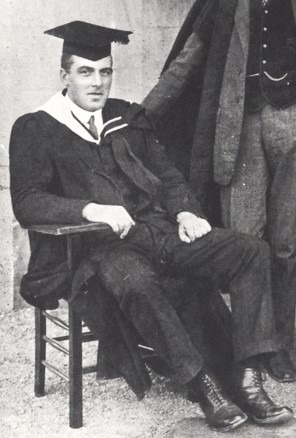Compared to the history and philosophy areas of universities in the early twentieth century, the curriculum of the Classics changed little. There was still change. There were always minor changes, across the curriculum in proscribed books and authors, and adjustments in lecture notes. More significant change came in curriculum re-structuring and changing the name of the school in 1926 from “Classics and Ancient History” to just “Classics,” dropping “Ancient History” from the title. Ancient history continued to be taught in lectures, but the curriculum came to be interpreted in what today, former Prime Minister John Howard politically refers to as the ‘conservative constant’. The ‘conservative constant’ in the Classics curriculum was Latin I and II, and Greek I and II. The curriculum did change but around that constant core. This is quite different to the restructuring in the history and philosophy courses. The 1911 UQ handbook set out the core course lectures, and it was never repeated in the proceeding handbooks. What demonstrated the stability of the course lectures were almost identical examination outlines and requirements, across the handbooks, according to Latin I and II, and Greek I and II. A Greek III course was added in 1948 which required prose composition and unseen translation.
It is therefore assumed that the structure of Latin I and II, and Greek I and II, as set out in 1911, remained the same:
Latin I
- Translation from Latin into English
- Translation from English into Latin
- Roman History — General, with more attention to period 133-31 B.C.
- Roman Literature — General Knowledge
Latin II
- Translation from Latin into English
- Translation from English into Latin
- Roman History — General, more particular knowledge of period 269 B.C. to 69 A.D.
- Roman Literature — General Knowledge
Greek I
- Translation from Greek into English
- Translation from English into Greek
- Greek History — General, with more particular attention to period 510-404 B.C.
- Greek Literature — General Knowledge
Greek II
- Translation from Greek into English
- Translation from English into Greek
- Greek History — General, more particular attention of period 510-332 B.C.
- Greek Literature — General Knowledge
In 1912 a Classical Honours’ Program over 3-4 Years was introduced, and remained until 1948 when the examination requirements were revised. In 1912 a Graduation Course in Ancient History was set-out with a proscribed reading outline. Special studies, with more selected lists of authors and books, came in 1914 and remained until the curriculum restructure of 1926. With the restructure came a new unit of learning called, Greek Literature and Art (III), and its outline was as follows:
- History (20 lectures)
- Literature (10 lectures)
- Philosophy (15 lectures)
- History of Art (10 lectures)
- History of Science (5 lectures)
‘History of Science’ was dropped after 1944, and the course remained until the 1948 re-structure of the curriculum. In that 1948 re-structure ‘Preparatory Greek’ [a beginners course] and ‘Greek & Roman Civilisation’ [a new pass course] were added. Most of the changes occurred in the Classical Honours’ Program, with examination outlines and requirements coming to be known as Latin A-C and Greek A-C.
Image: Professor John Lundie Michie, first Professor of Classics. UQFL466_AL_P_54_-_Professor_John_Lundie_Michie,_3_April_1911 2, Wikipedia.
Neville Buch
Latest posts by Neville Buch (see all)
- Merry Christmas. A Gift Article for you, A Christmas Carol - December 25, 2024
- Dear grossly, ethically, corrupted - December 21, 2024
- Thoughts with a Professional History colleague on “Artificial Intelligence” - December 21, 2024


